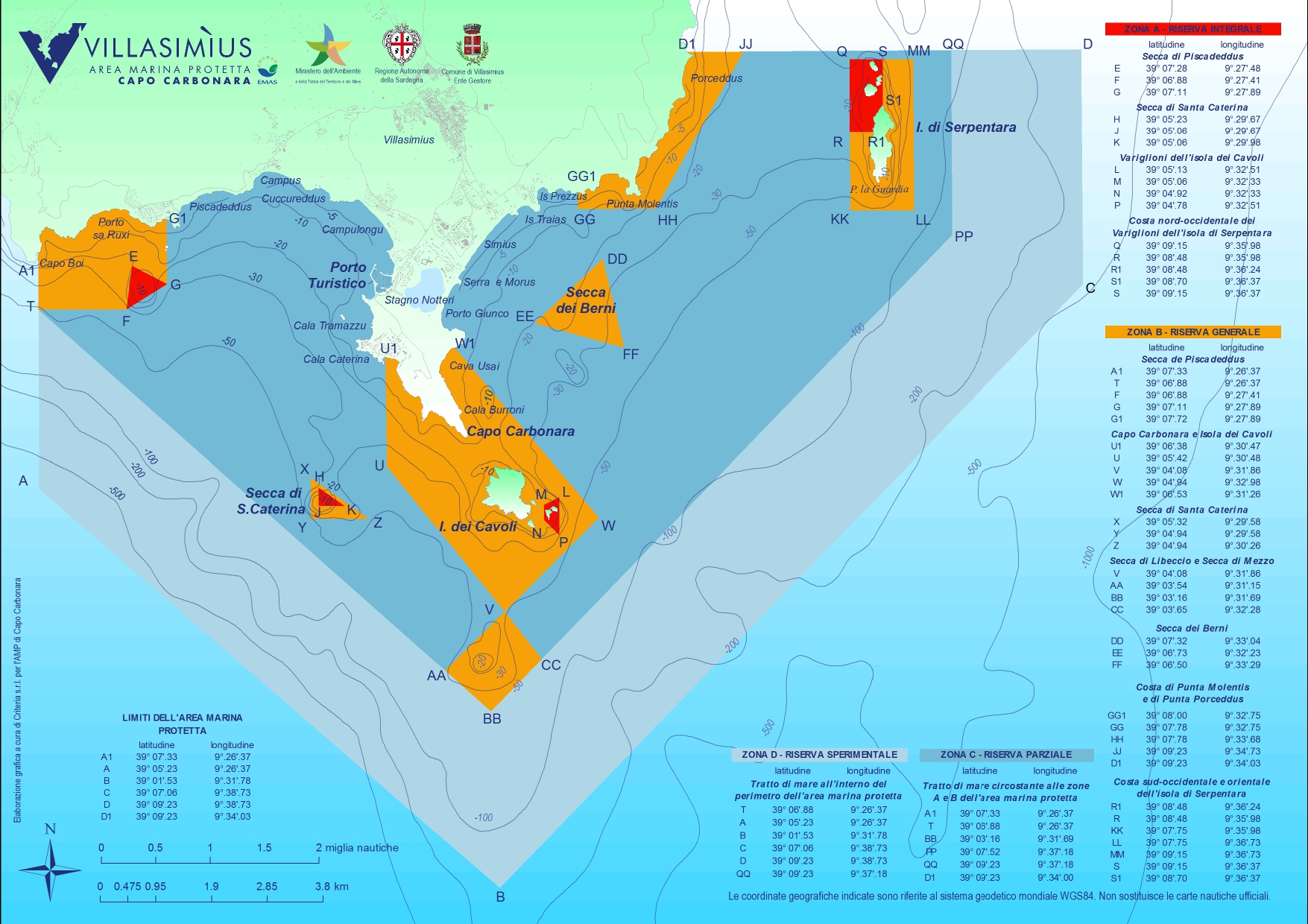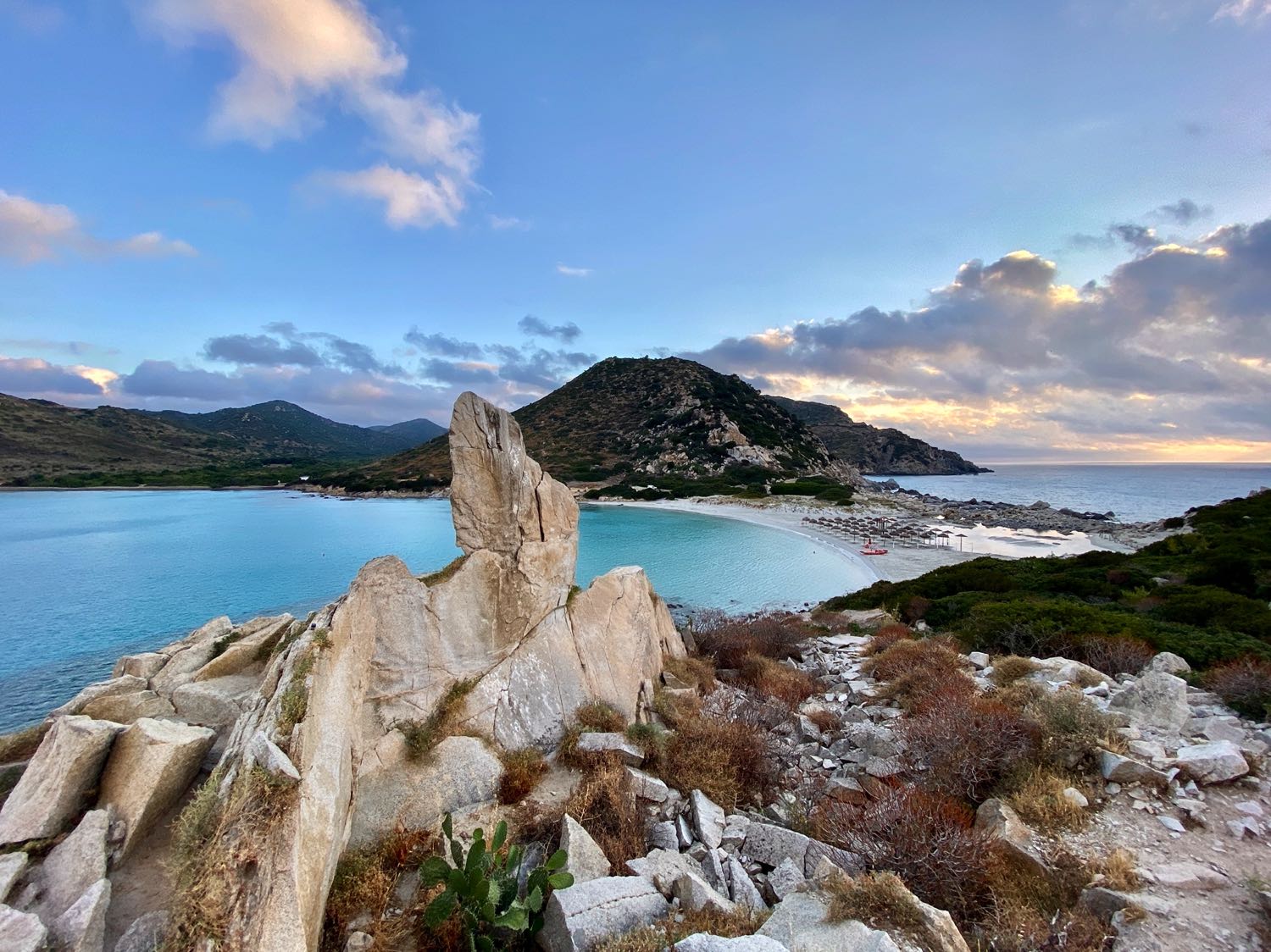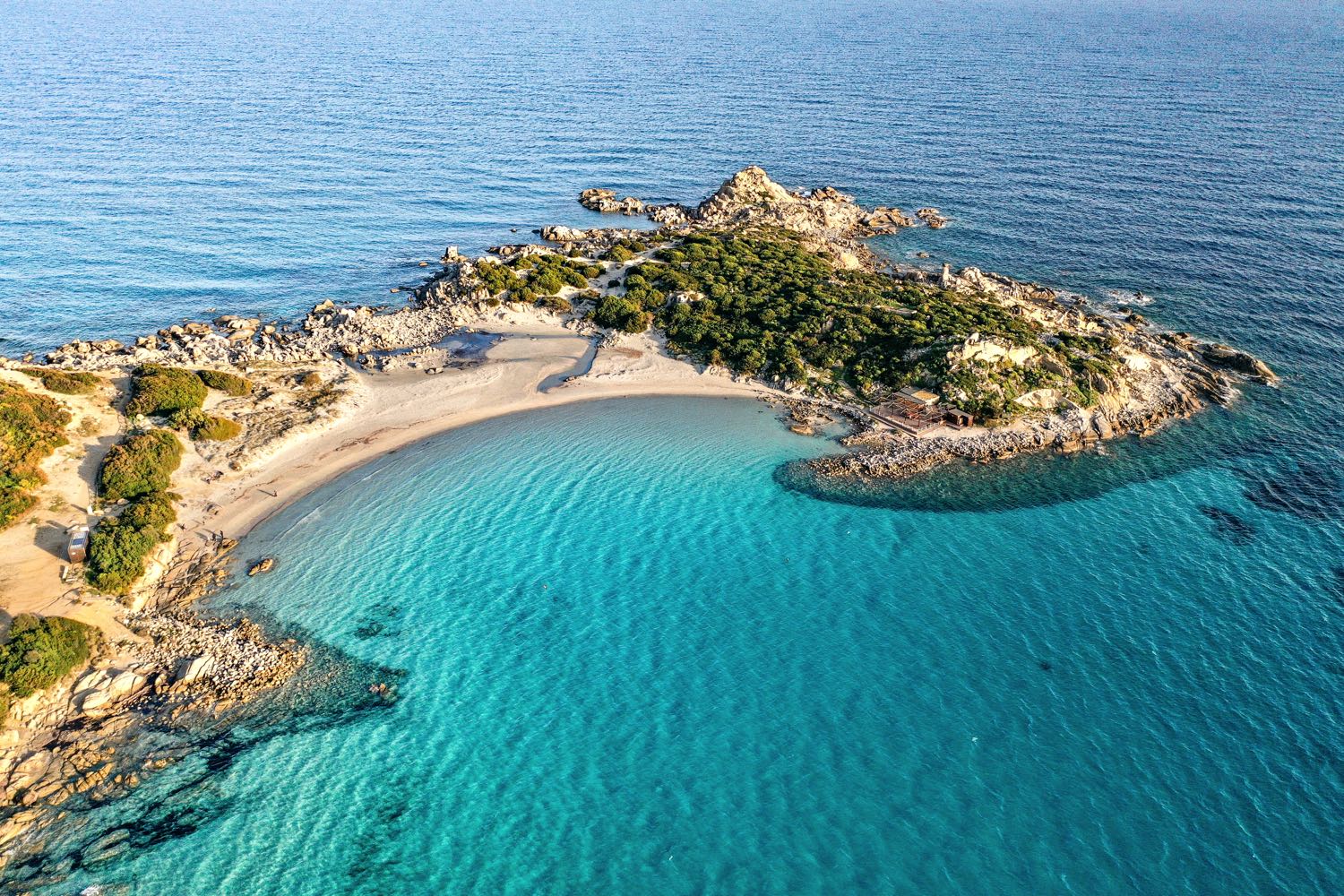

Numerous beaches overlook the MPA, forming a kind of isthmus with the Notteri pond wetland in the center, surrounded by one of the most diverse and fascinating coastlines in the Mediterranean.

In the submerged scenarios, one can admire the shapes of granite rocks, pinnacles, depressions, crevices, and tafoni, often colored by the yellow of sea daisies or the red of gorgonians, where peaceful populations of large groupers, dentex, and sea bream, as well as schools of Mediterranean barracuda, patrol in search of food. Among marine mammals, in addition to the frequent presence of the coastal dolphin, the bottlenose dolphin, in recent years several specimens of fin whales, sperm whales, common dolphins, and striped dolphins have been sighted in the deeper waters of the Marine Protected Area.
Fun fact: Did you know that the Capo Carbonara Marine Protected Area takes its name from the homonymous promontory? It comes from the ancient name of Villasimius, “Crabonaxa”, linked to the use of wood for charcoal production.
Discover much more by visiting the official website of the Capo Carbonara MPA.